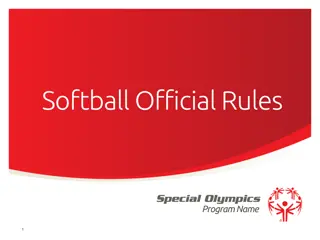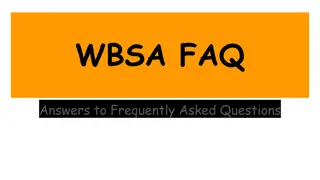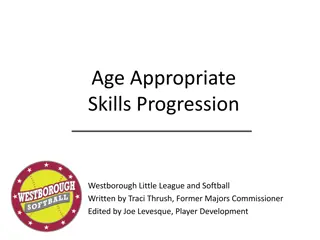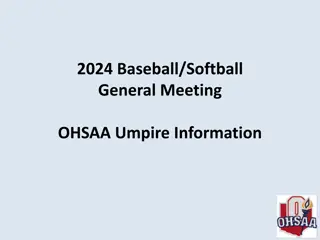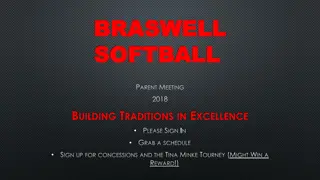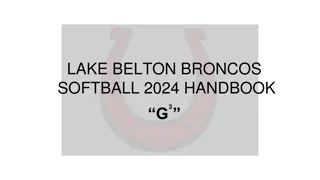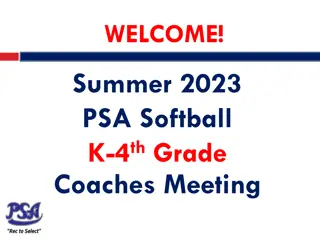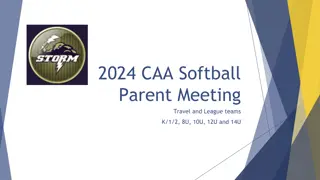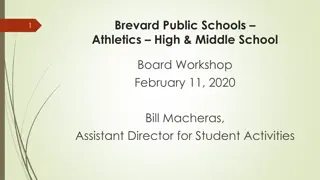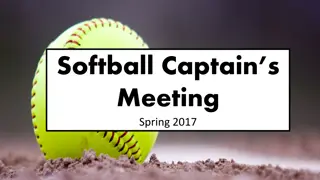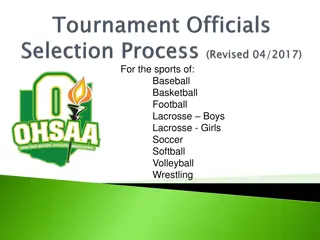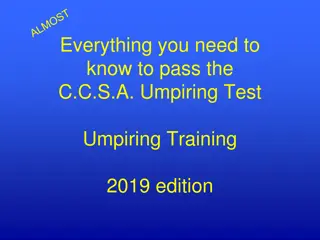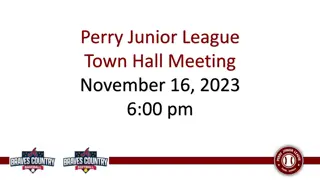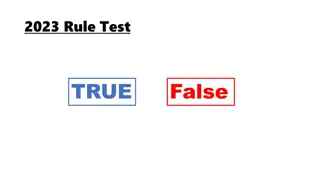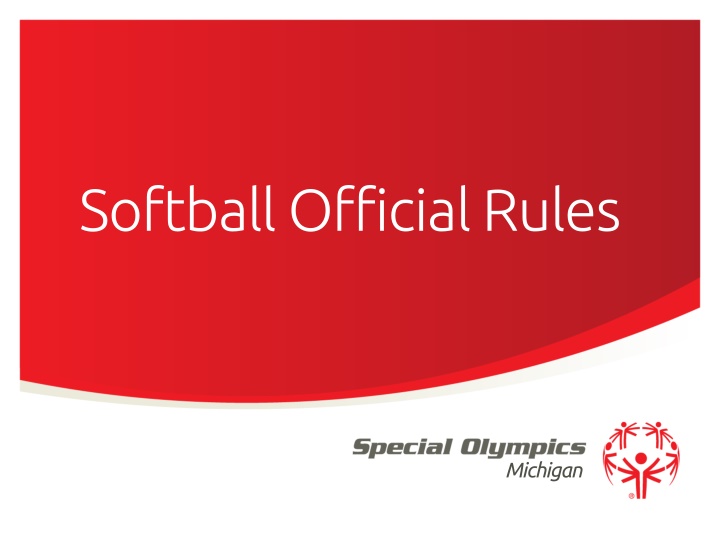
Michigan Softball Official Rules and Regulations
This guide covers key aspects of softball officiating in Michigan, including event schedules, team requirements, player positions, uniforms, and equipment regulations. It outlines the necessary information for a successful softball season, from team sizes to player responsibilities on the field.
Download Presentation

Please find below an Image/Link to download the presentation.
The content on the website is provided AS IS for your information and personal use only. It may not be sold, licensed, or shared on other websites without obtaining consent from the author. If you encounter any issues during the download, it is possible that the publisher has removed the file from their server.
You are allowed to download the files provided on this website for personal or commercial use, subject to the condition that they are used lawfully. All files are the property of their respective owners.
The content on the website is provided AS IS for your information and personal use only. It may not be sold, licensed, or shared on other websites without obtaining consent from the author.
E N D
Presentation Transcript
Softball Official Rules Michigan
A picture paints a thousand words A picture paints a thousand words Let me win, but if I cannot win, let me be brave in the attempt. Use the Picture and Caption format to create strong compelling slide like this. Don t t forget to caption where possible. For best effect crop the image to fill the placeholder. 2
The Basics Sport season: June September Culminating State Events: State Softball Finals
Events Offered Team Competition Slow Pitch Unified Team Competition Slow Pitch T-ball Coach Pitch (Regional/Area Only) Individual Skills Contest
Team Size Team rosters shall contain a minimum of 11 players and a maximum of 15 players. May register 3 athletes as alternates. A team may start a game with 10 players and if an injury or ejection occurs, may finish with 9 players. Games may not begin with 9 players; in this case a forfeit will be declared. All coaches are required to turn in 3 scores prior to the state event, in which their roster must be the same for all 3 scores
Players/Positions Ten players in the field at all times: Pitcher (F1) Catcher (F2) First Baseman (F3) Second Baseman (F4) Third Baseman (F5) Shortstop (F6) Left Fielder (F7) Left Centerfielder (F8) Right Fielder (F9) Right Centerfielder (F10)
Uniform Uniforms consist of a jersey, shorts or pants, stockings and sport shoes. All members of a team must wear the same pants or shorts, there may not be a combination of both styles. All team members must have identical uniforms in color and design. The Special Olympics Michigan logo must be on the jersey. Caps, visors, and headbands are optional for players but can be mixed. If more than one type is worn, they all must be of the same color.
Uniform Rubber soled athletic shoes or rubber cleats must be worn; metal spikes are not allowed. Bandanas, du-rags, jewelry, and denim may not be worn during games or practice. Headwear for religious or medical reasons are acceptable but must be brought to the attention of the Games Director prior to competition.
Equipment Ball Regulations: The competition 12 in (30.5cm) ball shall be between 11 7/8 in (30.2cm) and 12 1/8 in (30.8cm) in circumference and shall weigh between 178.0g (6 ounces) and 198.4g (7 ounces). Batting helmets are required for all batters and base runners. The catcher must wear a face mask and catcher s type helmet. Chest protectors and throat guards are not required but recommended.
Equipment - Official Bat Shall be of one-piece construction, multi-piece permanently assembled or two-piece interchangeable construction. If the bat is designed with interchangeable components, it must meet the following criteria. Shall not be more than 86.4cm (34 in) long, nor exceed 1077.0 g (38 ounces) in weight. Shall be made of hardwood, metal, bamboo, plastic, graphite, carbon, magnesium, fiberglass, ceramic, or any other composite material approved by the ISF Equipment Standards Commission or NGB Standards.
Playing Field Baselines: Should be 65 in length Can be modified to 60 or 70 if the field is not set up for 65 bases Pitching Distance: Should be 46 in distance Can be modified to anywhere between 40 -50 if the field is not set up for the 46 distance. Pitching distance for Unified Divisions is 55 .
Playing Field Double Bases May be used at first base and home plate if the field is set up to allow them If a play is made at first base on any batted ball, and the batter- runner touches only the fair portion, and if the defense appeals prior to the batter runner returning to first base, the batter runner is out. After the batter-runner passes first base, they may return to either portion of the double base and may stand on either portion for the beginning of subsequent plays. Please contact the state office for official double base rules Double bases are not currently used at State Softball Finals at State Fall Games, or SW/SW Regional competitions.
General Rules A game will consist of 7 innings Each inning there is a 7-run or 3-out rule. If the hitting team records 7-runs before 3-outs are recorded, that half inning is over and the teams switch. If the defensive team records 3-outs before 7-runs are scored, that half inning is over and the teams switch. Exception: In the final inning the visiting team may score as many runs as they can until they are up 12-runs. At that point, their turn at bat is over. The home team may then also score as many runs as they can, until they tie the score. If this happens, the game is over and a tie game is declared.
General Rules A time limit of one hour and five minutes will be utilized for all games. No new inning can begin after this limit. A game will be deemed complete if a team has a 15- run lead after 4 innings or 12-runs after 5 innings. In the case of inclement weather, two complete innings shall be considered a complete game.
General Rules A foul ball following 2 strikes is an out. The batting order cannot change except for the following situations: The Batter is Out When playing shorthanded and it is the dropped player s position in the batting order. If an athlete is ejected, it will be considered an out when his/her time to bat arrives. A new athlete may be added to the bottom of the batting order at any time. The batting order will follow a round robin format where all players will be in the hitting lineup, regardless if they are playing in the field at the time.
General Rules Sliding is allowed, but not recommended. No assisted devise allowed during team play. There will be no more than two coaches for each team to give words or signals of assistance and direction to the members of their team while at bat. One should be stationed near first base and the other near third base. Each coach must remain in his/her coaches box.
Tie Breaker Starting with the top of the 8th inning, or the first inning after the time limit, and each half inning thereafter, the offensive team shall begin its turn at the bat with the player who is scheduled to bat last in the respective half inning being placed on second base. The player who is running can be substituted in accordance with the substitution rules.
Pitching Regulations The pitch starts when the pitcher makes any motion that is part of his/her windup after the required stop. The pitcher must deliver the ball toward home plate on the first forward swing of the pitching arm past the hip with an underhanded motion. The pivot foot must remain in contact with the pitcher's plate until the pitched ball leaves the hand.
Batting The batting order must show the first and last name, uniform number and the position on the line-up card and must be delivered before the game by the manager or captain to the plate umpire. In Unified, the line-up card shall designate A for Athlete and P for Unified Partner next to that players information. The batter must have both feet completely within the batter's box prior to the start of the pitch. They may touch the lines, but no part of their foot may be outside the lines prior to the pitch.
Batting A Ball is Called by the Umpire for each legally pitched ball that: Does not enter the strike zone. Touches the ground before reaching home plate. Touches home plate and at which the batter does not swing.
Infield Fly Rule The Infield Fly Rule will be in effect when there are less than two outs and there are runners on first and second or the bases are loaded. The umpire will announce, Infield Fly when one of the above conditions exists and a batter hits a pop-fly in the infield. An Infield Fly means the batter is automatically out, whether the ball is caught or not. Base runners do not need to advance and may stay at their base. If they choose to advance, they may do so on their own.
Unified Softball The roster shall contain a proportionate number of athletes and partners. May register up to 4 alternates: 2 Athletes and 2 Unified Partners During competition, the line-up shall never exceed five traditional athletes and five partners at any time. The batting order shall alternate athletes and partners. Fielding Positions Outfield: 2 Athletes and 2 Unified Partners (any order) Infield: 2 Athletes and 2 Unified Partners (any order) Pitcher/Catcher: 1 at each position; can be any combination
T-Ball Bases may be modified from a standard distance of 60 feet. The distance from home plate to the pitcher s rubber may be modified from a minimum distance 40ft. A neutral zone will be marked in an arc of 45 feet, 11 1/4 inches from home plate. Any batted ball that does not cross this line will be designated a foul ball. A coaches circle will be located 9 feet, 10 1/4 inches beyond second base and made with a 5 feet, 11 inch diameter.
T Ball Each team must have 10 players to start a game. A batting tee will be placed directly on home plate. All defensive players must stand behind the neutral zone before the ball is hit. They may come into the neutral zone after the ball is hit to field it. If a batted ball does not leave the neutral zone, and the defensive player does not touch it, the ball will be called a foul ball.
T- Ball If the batter has two strikes and fouls off the third attempt, he or she shall be declared out. A regulation game consists of six innings. A time limit of one hour shall be in force for all games. Two base coaches are allowed for the offensive team, one in the first base coach s box and one in the third base coach s box.
Coach Pitch Coach Pitch is only used during Area or Regional Competitions. Please contact the State Office for official coach pitch rules.
Individual Skills Competition The individual Skills Contest is designed for lower ability, or new, athletes who have not yet developed the skills necessary to participate meaningfully in team competitions, and atheltes who use a wheelchair. Athlete may not be assisted by coaches and modifications may be made for athletes who have visual or hearing impairments. Events Include: Base Running Throwing Fielding Hitting
Individual Skills Competition Base Running
Individual Skills Competition Throwing
Individual Skills Competition Fielding
Individual Skills Competition Hitting


